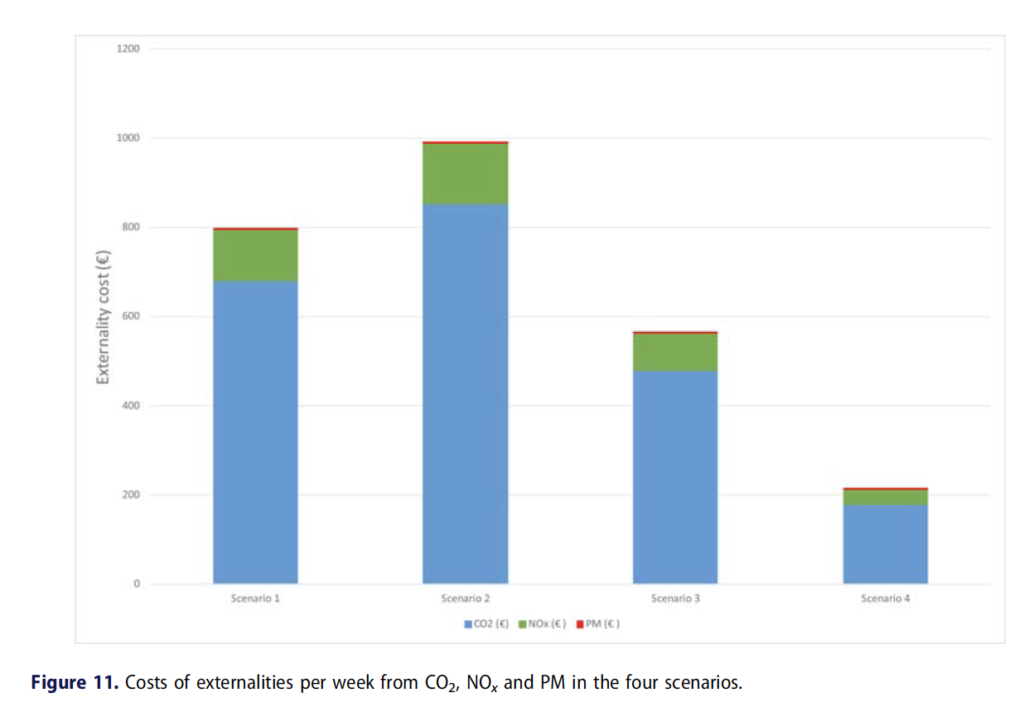Literature on city logistics presents a large number of practical experiences of urban consolidation centres (UCCs). Still, there is limited knowledge about the potential reduction of the environmental impact and the related externality costs (vehicle kilometres, the number of vehicles, CO2 , NOx and PM).
A new paper by Katsela et al. evaluates the environmental impacts of consolidation in four scenarios of different consolidation set-ups. The research aims to estimate and discuss how transport-related externalities in these set-ups can be included in the financial evaluation of city logistics.
The research validates this modelling framework with empirical data from a city logistics case in Sweden and then analyses the scenarios. The research presented extends the understanding of the costs of externalities related to UCCs by quantifying the reduction in these costs in the scenarios. In addition, the different scenarios provide insights into the transport and environmental effects of different consolidation set-ups.
Data on deliveries
A total of 59 vehicles made 124 deliveries in 24 hours (average: 2,1 deliveries per vehicle). Less than 50% of the vehicles delivered more than one cubic metre of goods in the study area (average: 1,7 cubic metres). About 15% of the vehicles delivered more than five cubic metres of goods. Only a few deliveries were made per vehicle. About 65% of the vehicles made only one delivery in the city centre, while about 20% made more than three deliveries. The total distance travelled was approximately 174 km in the city centre. Several deliveries were made to the same addresses, particularly near the shopping malls in the city centre.
Scenario’s
After validating the model with Scenario 1 (baseline), the researchers analysed the effects of the three other scenarios and compared the results with Scenario 1. The scenarios were used to estimate the transport and environmental performance of using a micro-terminal with or without a UCC. Scenarios 2– 4 differed from Scenario 1 (baseline) in that they combined a micro-terminal and a UCC in different ways.
Baseline Scenario 1 presents the costs of externalities in the current situation. Scenario 2 increases the costs of externalities by 20% since all vehicles need to drive extra in addition to their regular route increasing the emissions and the overall cost. In Scenario 3, there is a clear 30% reduction in costs of externalities due to the consolidation of the freight in the transport provider’s terminal. Scenario 4, including a UCC and a micro-terminal, reduces the costs of externalities by 70% compared to the current situation. The results show that consolidation in a micro-terminal in the city centre, combined with a UCC, has the greatest potential to reduce the number of vehicles, vehicle kilometres and the negative externalities and their costs in the case.

Future research could conduct observations for a longer period of time or a few times per year to create an even more detailed image of the freight flows and vehicle movements in the city centre. Future research should increase the generalisability of the results of this study by applying the method to a number of different city logistics initiatives to obtain general statistics on the environmental impact, the costs of externalities and contextual effects. This would contribute to a broader understanding of the situation in general, and of the actions that need to be implemented. Another direction for future research is to further investigate the inclusion of externalities included in business models for city logistics. The insights presented in this paper show that the cost of externalities can play a role in the business model, but there is a need to further compare these costs to other costs and address how to practically measure and include costs of externalities in a business model over time.
